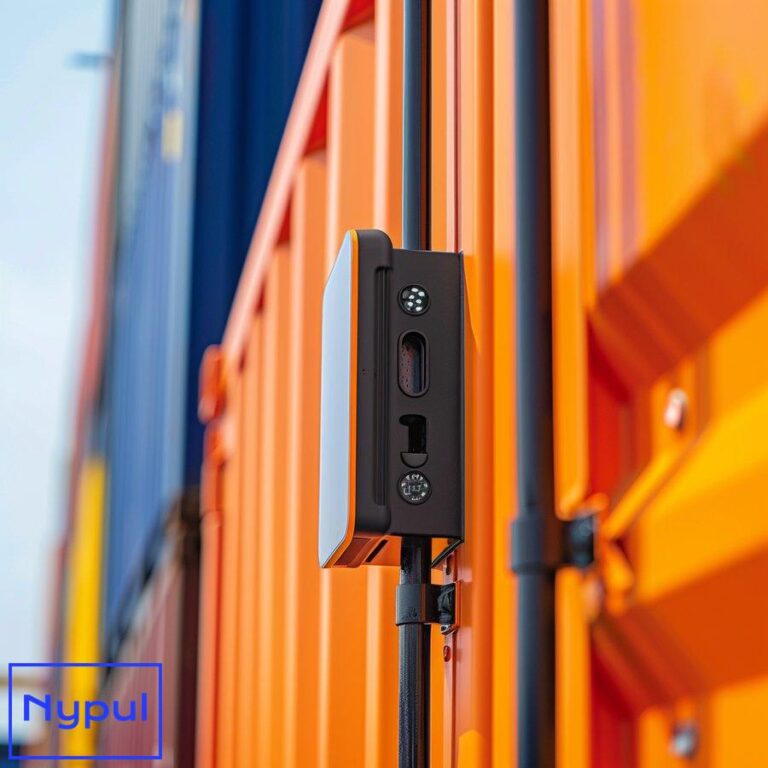What Are the Classification of Drayage
What is drayage and why is it important in logistics?

Drayage is a crucial component of the logistics industry that involves transporting goods over short distances, typically from a port, rail hub, or airport to a warehouse or final destination. Despite the relatively short distance covered, drayage plays a vital role in ensuring the smooth flow of goods through the supply chain.

One of the primary reasons drayage is so important is that it serves as a critical link between different modes of transportation. For example, when a container ship arrives at a port, the containers must be unloaded and transported to a nearby warehouse or directly to the customer. This is where drayage comes in, providing the necessary transportation to move the goods from the port to their next destination.
Another reason drayage is essential is that it helps to optimize the supply chain by reducing congestion at ports and other transportation hubs. By quickly moving goods away from these busy areas, drayage helps to keep the flow of goods moving smoothly and efficiently.
Drayage also plays a key role in meeting customer demands for fast and reliable delivery. In today’s fast-paced business environment, customers expect their goods to arrive on time and in good condition. Drayage helps to ensure that goods are delivered promptly by providing a reliable and efficient transportation solution for the final leg of the journey.
| Benefit | Description |
|---|---|
| Intermodal connectivity | Drayage connects different modes of transportation, enabling seamless movement of goods |
| Reduced congestion | By quickly moving goods away from busy ports and hubs, drayage helps to reduce congestion |
| Timely delivery | Drayage ensures goods are delivered promptly to meet customer expectations |
| Cost-effectiveness | Short-distance transportation provided by drayage is often more cost-effective than long-haul alternatives |
In summary, drayage is a vital component of the logistics industry that ensures the smooth and efficient movement of goods over short distances. By connecting different modes of transportation, reducing congestion, and enabling timely delivery, drayage plays a critical role in optimizing the supply chain and meeting customer demands.
What are the six main classifications of drayage?
The Intermodal Association of North America (IANA) recognizes six main classifications of drayage:
1. Inter-carrier drayage
This type of drayage involves the transportation of goods between two different carriers within the same metropolitan area. For example, moving a container from a rail terminal to a trucking terminal for further transportation.
2. Intra-carrier drayage
Intra-carrier drayage refers to the movement of goods between two locations owned by the same carrier. This could involve transporting a container from a carrier’s rail hub to their own warehouse or distribution center.
3. Pier drayage
Pier drayage involves the transportation of goods from a rail hub to a dock or pier, where they will be loaded onto a ship for ocean transport.
4. Door-to-door drayage
As the name suggests, door-to-door drayage involves the transportation of goods directly to the customer’s location. This type of drayage eliminates the need for additional transportation and handling, making it a convenient option for customers.
5. Expedited drayage
Expedited drayage is used when goods need to be transported quickly due to time constraints. This type of drayage often involves the use of dedicated trucks and may require special handling to ensure timely delivery.
6. Shuttle drayage
Shuttle drayage involves the transportation of goods to a temporary storage location, such as a parking lot or storage yard, when the main transportation hub is at capacity. This allows for the efficient movement of goods even when space is limited.
| Drayage Type | Description |
|---|---|
| Inter-carrier | Transportation between different carriers in the same area |
| Intra-carrier | Movement between locations owned by the same carrier |
| Pier | Transportation from rail hub to dock or pier |
| Door-to-door | Direct delivery to customer’s location |
| Expedited | Fast transportation for time-sensitive goods |
| Shuttle | Movement to temporary storage when main hub is at capacity |
Understanding these different classifications of drayage is essential for logistics professionals, as it allows them to choose the most appropriate type of drayage for their specific needs, ensuring efficient and cost-effective transportation of goods.
How do distance and time sensitivity affect drayage classification?

Distance and time sensitivity are two critical factors that influence the classification of drayage services. The distance covered and the urgency of delivery can determine which type of drayage is most appropriate for a given situation.
Distance
The distance goods need to travel is a primary factor in determining the type of drayage required. Drayage services are typically used for short-distance transportation, often within a single metropolitan area. However, the specific distance can vary depending on the type of drayage.
For example, inter-carrier and intra-carrier drayage often involve transportation within a relatively limited geographic area, such as moving goods between two terminals in the same city. On the other hand, door-to-door drayage may involve slightly longer distances, as goods are transported directly to the customer’s location, which could be in a different city or region.
Time Sensitivity
The urgency of delivery is another crucial factor in determining the appropriate type of drayage. Some goods may be time-sensitive, requiring expedited transportation to ensure they reach their destination on time.
In such cases, expedited drayage services are often used. This type of drayage prioritizes speed and efficiency, often utilizing dedicated trucks and special handling to ensure prompt delivery. Expedited drayage is commonly used for perishable goods, high-value items, or goods that are critical to a company’s operations.
On the other hand, when goods are less time-sensitive, other types of drayage, such as inter-carrier or intra-carrier drayage, may be more appropriate. These types of drayage prioritize cost-effectiveness and efficiency over speed, allowing for the consolidation of shipments and the use of standard transportation methods.
| Factor | Impact on Drayage Classification |
|---|---|
| Short distance | Favors inter-carrier, intra-carrier, and pier drayage |
| Longer distance | May require door-to-door drayage |
| High time sensitivity | Necessitates expedited drayage |
| Low time sensitivity | Allows for inter-carrier, intra-carrier, or shuttle drayage |
Considering distance and time sensitivity is essential when selecting the appropriate type of drayage. By understanding these factors, logistics professionals can choose the most suitable drayage service to meet their specific transportation needs, balancing cost, efficiency, and speed of delivery.
How does carrier ownership influence drayage types?
Carrier ownership plays a significant role in determining the type of drayage service utilized. The ownership structure of the carriers involved in the transportation process can influence the choice between inter-carrier and intra-carrier drayage.

Inter-carrier drayage
Inter-carrier drayage involves the transportation of goods between two different carriers within the same metropolitan area. This type of drayage is used when the carriers involved are owned by separate companies, each with their own transportation assets and infrastructure.
For example, if a container needs to be moved from a rail terminal owned by one company to a trucking terminal owned by another, inter-carrier drayage would be required. In this case, the ownership of the carriers dictates the need for a separate drayage service to facilitate the transfer of goods between the two companies.
Intra-carrier drayage
Intra-carrier drayage, on the other hand, refers to the movement of goods between two locations owned by the same carrier. This type of drayage is used when a single company owns both the origin and destination facilities, allowing for a more streamlined transportation process.
For instance, if a carrier owns both a rail hub and a warehouse in the same city, they can use intra-carrier drayage to move containers between these two locations. This allows for greater control over the transportation process, as the carrier can coordinate the movement of goods using their own assets and personnel.
Advantages of intra-carrier drayage
Intra-carrier drayage offers several advantages over inter-carrier drayage:
- Increased efficiency: By using their own assets and personnel, carriers can optimize the transportation process, reducing the need for additional coordination and handling.
- Cost savings: Intra-carrier drayage can be more cost-effective, as carriers can avoid the fees associated with transferring goods between different companies.
- Enhanced visibility: When a single carrier controls the entire transportation process, they can provide better visibility and tracking of goods, as there are fewer handoffs between different parties.
| Drayage Type | Carrier Ownership | Advantages |
|---|---|---|
| Inter-carrier | Different carriers | Allows for transportation between carriers in the same area |
| Intra-carrier | Same carrier | Increased efficiency, cost savings, enhanced visibility |
Understanding how carrier ownership influences drayage types is crucial for logistics professionals. By recognizing the differences between inter-carrier and intra-carrier drayage, they can make informed decisions about which type of drayage is most appropriate for their specific transportation needs, taking into account factors such as cost, efficiency, and visibility.
What role does drayage play in intermodal transportation?
Drayage plays a crucial role in intermodal transportation, serving as the essential link between different modes of transport. Intermodal transportation involves the movement of goods using multiple modes, such as ships, trains, and trucks, without the need for handling the goods themselves when changing modes.
Connecting different modes of transport
Drayage is the key to connecting these different modes of transport, ensuring the smooth and efficient flow of goods throughout the intermodal transportation process. For example, when a container ship arrives at a port, the containers must be unloaded and transported to the next mode of transport, such as a rail terminal or trucking depot. This is where drayage comes in, providing the necessary short-distance transportation to move the containers from the port to the next leg of their journey.
Facilitating seamless transitions
By facilitating these seamless transitions between modes of transport, drayage helps to optimize the intermodal transportation process. Without efficient drayage services, containers could become bottlenecked at ports or other transportation hubs, leading to delays and increased costs.
Enabling door-to-door service
Drayage also plays a vital role in enabling door-to-door intermodal transportation. In some cases, goods may need to be transported directly from a port or rail terminal to the customer’s location. Door-to-door drayage services make this possible, providing the final leg of the transportation journey and ensuring that goods reach their ultimate destination.
Importance in supply chain management
The efficiency and reliability of drayage services can have a significant impact on the overall performance of intermodal transportation and, by extension, the entire supply chain. Delays or disruptions in drayage can lead to ripple effects throughout the supply chain, causing missed deadlines, increased costs, and dissatisfied customers.
| Drayage Role | Importance in Intermodal Transportation |
|---|---|
| Connecting modes | Links different modes of transport, enabling intermodal transportation |
| Facilitating transitions | Ensures smooth and efficient flow of goods between modes |
| Enabling door-to-door service | Provides final leg of transportation to customer’s location |
| Impacting supply chain | Efficiency and reliability of drayage affects overall supply chain performance |
Therefore, logistics professionals must understand the critical role that drayage plays in intermodal transportation. By ensuring that drayage services are efficient, reliable, and well-coordinated with other modes of transport, they can optimize the intermodal transportation process and improve overall supply chain performance.
How do port operations impact drayage classifications?

Port operations have a significant impact on drayage classifications, as the efficiency and capacity of ports can influence the type of drayage services required. The specific needs and challenges of port operations often dictate the most appropriate type of drayage to be used.
Pier drayage
One of the most common types of drayage directly influenced by port operations is pier drayage. This type of drayage involves the transportation of goods from a rail hub to a dock or pier, where they will be loaded onto a ship for ocean transport. The efficiency of pier drayage is closely tied to the operations of the port itself, as any delays or congestion at the port can lead to bottlenecks and increased costs.

Shuttle drayage
Port operations can also impact the need for shuttle drayage. Shuttle drayage involves the transportation of goods to a temporary storage location, such as a parking lot or storage yard, when the main transportation hub is at capacity. This type of drayage is often used when ports are experiencing high volumes of traffic or when there is limited space available for storing containers.
Expedited drayage
The urgency of delivery can also be influenced by port operations, leading to the need for expedited drayage. If a port is experiencing delays or congestion, it may be necessary to use expedited drayage services to ensure that time-sensitive goods are delivered promptly. This type of drayage prioritizes speed and efficiency, often utilizing dedicated trucks and special handling to ensure timely delivery.
Inter-carrier and intra-carrier drayage
Port operations can also impact the choice between inter-carrier and intra-carrier drayage. If a port is served by multiple carriers, each with their own transportation assets and infrastructure, inter-carrier drayage may be necessary to move goods between the different carriers. On the other hand, if a single carrier has a significant presence at a port, intra-carrier drayage may be more efficient, allowing for the use of the carrier’s own assets and personnel.
| Port Operation Factor | Impact on Drayage Classification |
|---|---|
| Efficiency | Influences need for expedited drayage |
| Capacity | Determines requirement for shuttle drayage |
| Carrier presence | Affects choice between inter-carrier and intra-carrier drayage |
| Urgency of delivery | Drives demand for expedited drayage |
Understanding how port operations impact drayage classifications is essential for logistics professionals. By recognizing the specific needs and challenges of port operations, they can select the most appropriate type of drayage to ensure the efficient and cost-effective movement of goods through the supply chain.
What factors should be considered when choosing the right drayage type?
![]()
Choosing the right type of drayage is essential for ensuring the efficient and cost-effective movement of goods through the supply chain. Several key factors should be considered when selecting the most appropriate drayage service for a given situation.
Distance and location
The distance goods need to travel and the specific locations involved are primary factors in determining the type of drayage required. For short distances within a single metropolitan area, inter-carrier or intra-carrier drayage may be most appropriate. For longer distances or when goods need to be delivered directly to a customer’s location, door-to-door drayage may be necessary.
Time sensitivity
The urgency of delivery is another crucial factor to consider. If goods are time-sensitive and require expedited transportation, expedited drayage services may be the best option. This type of drayage prioritizes speed and efficiency, ensuring that goods reach their destination on time.
Carrier ownership
The ownership structure of the carriers involved in the transportation process can influence the choice between inter-carrier and intra-carrier drayage. If the carriers are owned by separate companies, inter-carrier drayage may be necessary to facilitate the transfer of goods between them. If a single company owns both the origin and destination facilities, intra-carrier drayage may be more efficient.
Port operations
The specific needs and challenges of port operations can also impact the choice of drayage type. Pier drayage may be necessary for moving goods from a rail hub to a dock or pier, while shuttle drayage may be required when ports are experiencing high volumes of traffic or limited storage capacity.
Cost considerations
Cost is always a significant factor in logistics decision-making. When choosing a drayage type, it’s essential to consider the cost implications of each option. Some types of drayage, such as expedited or door-to-door services, may be more expensive due to the additional resources and handling required. On the other hand, inter-carrier or intra-carrier drayage may be more cost-effective, particularly for shorter distances or when goods are less time-sensitive.
| Factor | Consideration |
|---|---|
| Distance and location | Short distance: inter-carrier or intra-carrier; Long distance or direct delivery: door-to-door |
| Time sensitivity | High urgency: expedited drayage; Low urgency: standard drayage types |
| Carrier ownership | Different carriers: inter-carrier; Same carrier: intra-carrier |
| Port operations | Specific port needs and challenges dictate drayage type |
| Cost | Balance cost with other factors such as urgency and resources required |
By carefully considering these factors and weighing the benefits anand drawbacks of each type of drayage, logistics professionals can make informed decisions that optimize the transportation process and enhance overall supply chain efficiency.
In conclusion, selecting the right drayage type is a multifaceted decision that requires careful consideration of various factors, including distance, time sensitivity, carrier ownership, port operations, and cost. By taking the time to evaluate these elements, logistics professionals can ensure that they choose the most effective drayage solution for their specific needs, ultimately leading to improved service delivery and customer satisfaction.
Conclusion
Drayage is an integral part of the logistics and transportation industry, serving as the critical link that connects various modes of transport. Understanding the classifications of drayage, the factors influencing their selection, and the impact of external elements such as port operations and carrier ownership is essential for logistics professionals.

The six main classifications of drayage—inter-carrier, intra-carrier, pier, door-to-door, expedited, and shuttle—offer different solutions tailored to specific transportation needs. Distance and time sensitivity significantly influence the choice of drayage type, while carrier ownership can dictate whether inter-carrier or intra-carrier services are more appropriate.
Additionally, the role of drayage in intermodal transportation highlights its importance in ensuring seamless transitions between transport modes. Port operations further impact drayage classifications, as the efficiency and capacity of ports can necessitate different drayage solutions.
Ultimately, when choosing the right drayage type, logistics professionals must consider a range of factors, including distance, time sensitivity, carrier ownership, port operations, and cost. By doing so, they can optimize the drayage process, ensuring timely and efficient delivery of goods while meeting customer expectations.
In the dynamic world of logistics, understanding the nuances of drayage is vital for maintaining a competitive edge and providing exceptional service. As the industry continues to evolve, staying informed about drayage classifications and their implications will empower logistics professionals to navigate the complexities of transportation with confidence and success.






